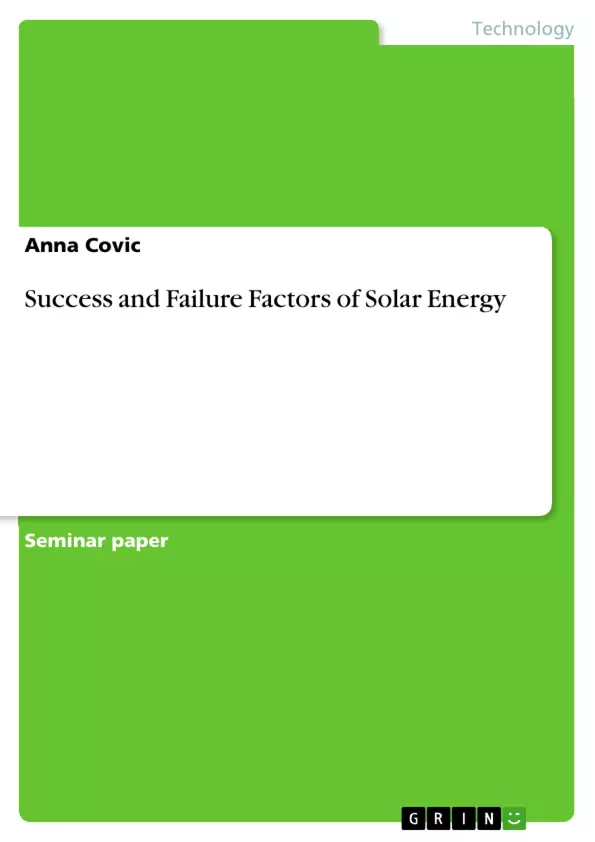By having a look at both the positive and negative aspects of solar energy the intent of this work is twofold: to explain what solar energy is about and to show its meaning and potential in today's energy world.
Chapter 2 introduces the concept of renewable energy by roughly outlining the various possibilities and furthermore, gives a short overview on solar energy. The aim of this passage is to familiarize the reader with this technology.
Chapter 3 compares the advantages solar energy has to offer and the reasons for which this technology has become a success with the disadvantages and factors that argue against the use of solar energy.
Building on the aforementioned comparison, chapter 4 assesses the positive and negative criteria and concludes this brief analysis with an outlook on the future role of solar energy as an energy source.
Inhaltsverzeichnis (Table of Contents)
- Introduction
- Renewable Energy Technologies - an overview
- Types of renewable energy
- Solar Energy
- Advantages and Disadvantages of Solar Energy
- Success factors
- Failure factors
- Solar Energy - a possible solution for our environmental problems?
Zielsetzung und Themenschwerpunkte (Objectives and Key Themes)
This work aims to explore the potential of solar energy as a sustainable energy source. The author aims to explain the fundamentals of solar energy and its relevance in the contemporary energy landscape.
- Types and characteristics of renewable energy
- Advantages and disadvantages of solar energy
- The role of solar energy in addressing environmental challenges
- The potential of solar energy as a future energy source
- The importance of energy mix and efficient utilization of solar energy
Zusammenfassung der Kapitel (Chapter Summaries)
The introduction sets the stage by emphasizing the limitations of fossil fuels and the need for alternative energy sources. It introduces solar energy as one of the promising renewable energy technologies.
Chapter 2 provides a comprehensive overview of renewable energy technologies, encompassing wind, hydro, bio, geothermal, and solar energy. The focus is on describing the principles and processes involved in each energy source.
Chapter 3 delves into the advantages and disadvantages of solar energy. It highlights the benefits of solar energy, such as its abundance, clean nature, and low environmental impact. The chapter also acknowledges the limitations of solar energy, such as its dependence on weather conditions and its cost of installation.
Schlüsselwörter (Keywords)
Renewable energy, solar energy, fossil fuels, environmental challenges, energy mix, sustainable energy, energy efficiency, advantages, disadvantages, success factors, failure factors, environmental impact, energy production, climate change.
- Arbeit zitieren
- Anna Covic (Autor:in), 2012, Success and Failure Factors of Solar Energy, München, GRIN Verlag, https://www.grin.com/document/311722



